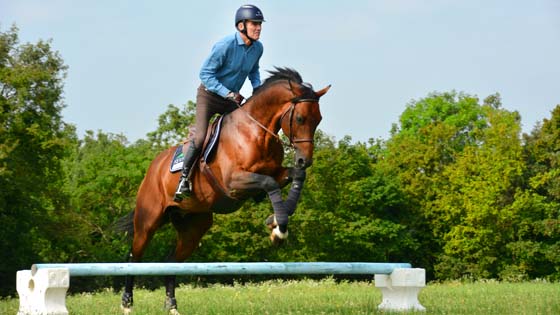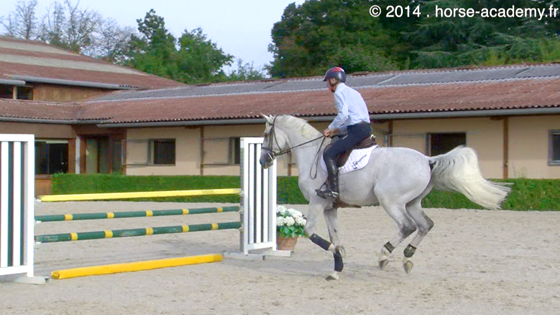How to deal with emotions approaching fences

It’s easy to feel calm and serene in our life if we stay in the comfort zone of our daily activities. The repetition of the same actions in the same situation is a reassuring way to chase away the concerns and questions about life (...)
It’s easy to feel calm and serene in our life if we stay in the comfort zone of our daily activities. The repetition of the same actions in the same situation is a reassuring way to chase away the concerns and questions about life. While riding a horse during a flat work session, doing the same movements with no specific goal or with no challenge, can make you feel serene and relaxed.
However when you are getting out of the beaten paths of your habits, your emotions will rise up which will disturb the serene state. Approaching a fence, entering the show ring, going for a jump-off, taking an exam…or sometime, just getting upset with something….all these events will trigger some mental and physical nervousness.
Riders are taught all the jumping technics and movements to approach a fence correctly, however, very few riders work on their mind set. Nonetheless, the key of success is there: the control of our thoughts and emotions when dealing with a risky situation.
The basic principles of mental preparation when jumping, especially when approaching a fence, can be practised anytime without being on a horse. When comfortably seated on your sofa, are you able to control your mind to stay focus and not think about the past, the future, or even a noise in the house, a bird outside, or even a fly on your skin? If so, try to be as focused when approaching a fence as you are when seated on your sofa.
Be your own mentor: be aware of each thought, image or opinion crossing your mind and notice their consequences on your general attitude and especially your position.
For my own practice, I base the control of my mind on oriental methodology such as yoga and meditation which are essential to me. It is a daily practice. When walking in the street, or driving, I practise staying serene in any circumstances: I don’t let an advertisement or a nervous driver disturb my mind. The goal is to keep the mind neutral and quiet whatever the circumstances. When riding, it is an essential element if you want to to stay connected with your horse. As we already talked about it in the past, it is important to stay focus on what is happening at the moment. The rider who lets his thoughts take over his mind, becomes an outsider to the current event and “loses” the focus of his horse.
One would say:”Yes, but if I don’t think about the future, I can’t anticipate therefore I lose my goal!” To live at the present time is perfectly possible. While on course, it takes only 1/10th of a second to see if the next fence is an oxer, and that will not prevent you to stay in touch with your feelings and the signals sent by your horse. There are many opportunities to be distracted by some comparisons, some dreams or some endless projections. They are like drugs, alcohol or TV… either you are a spectator of your own life, or you are an actor. Your choice.

